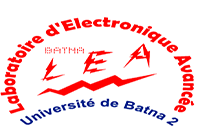Recent Publications
- Highly efficient ACdTS kesterite solar cell based on a new photovoltaic material
- Euclidean distance versus Manhattan distance for skin detection using the SFA database
- Inverted PTB7:PC70BM bulk heterojunction solar cell device simulations for various inorganic hole transport materials
- Metaheuristic-based decision maker framework for the development of multispectral IGZO thin-film phototransistors
- Highly-detective tunable band-selective photodetector based on RF sputtered amorphous SiC thin-film: Effect of sputtering power
- Study of Leaky Acoustic Micro-Waves in Piezoelectric Material (Lithium Niobate Cut Y-X) Using Probabilistic Neural Network (PNN) Classification
Copyright © UB2 2018. All Rights Reserved.
